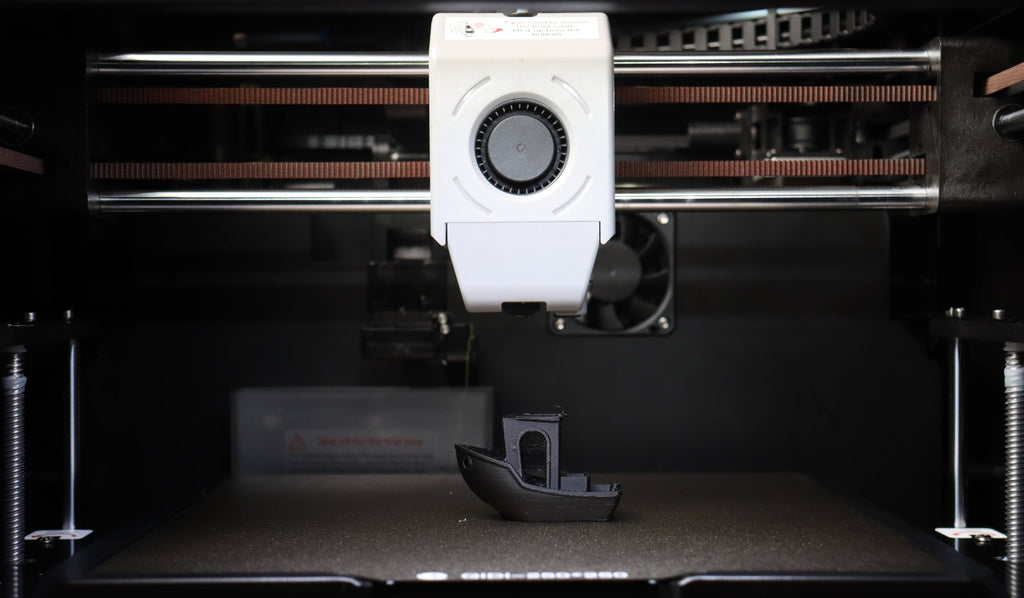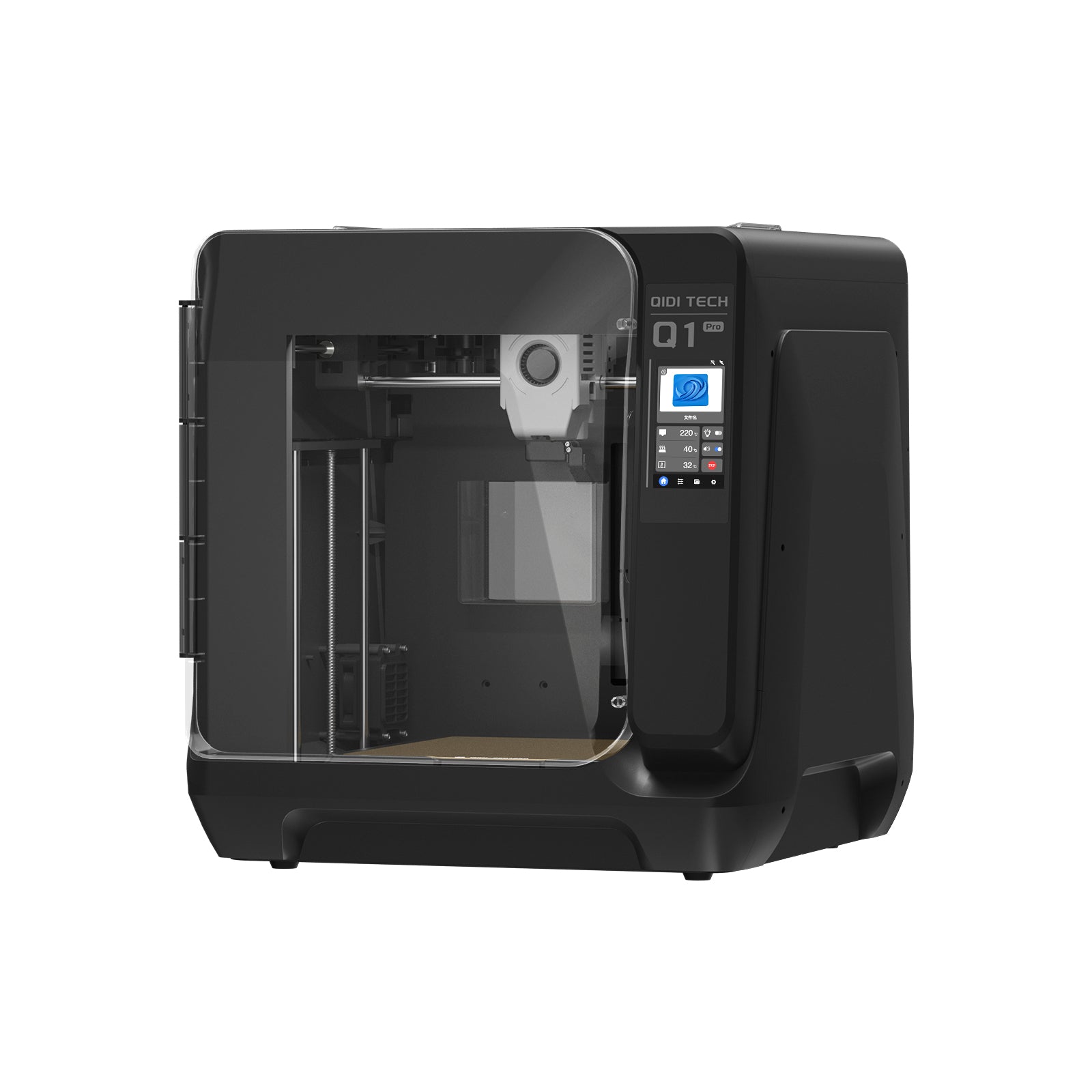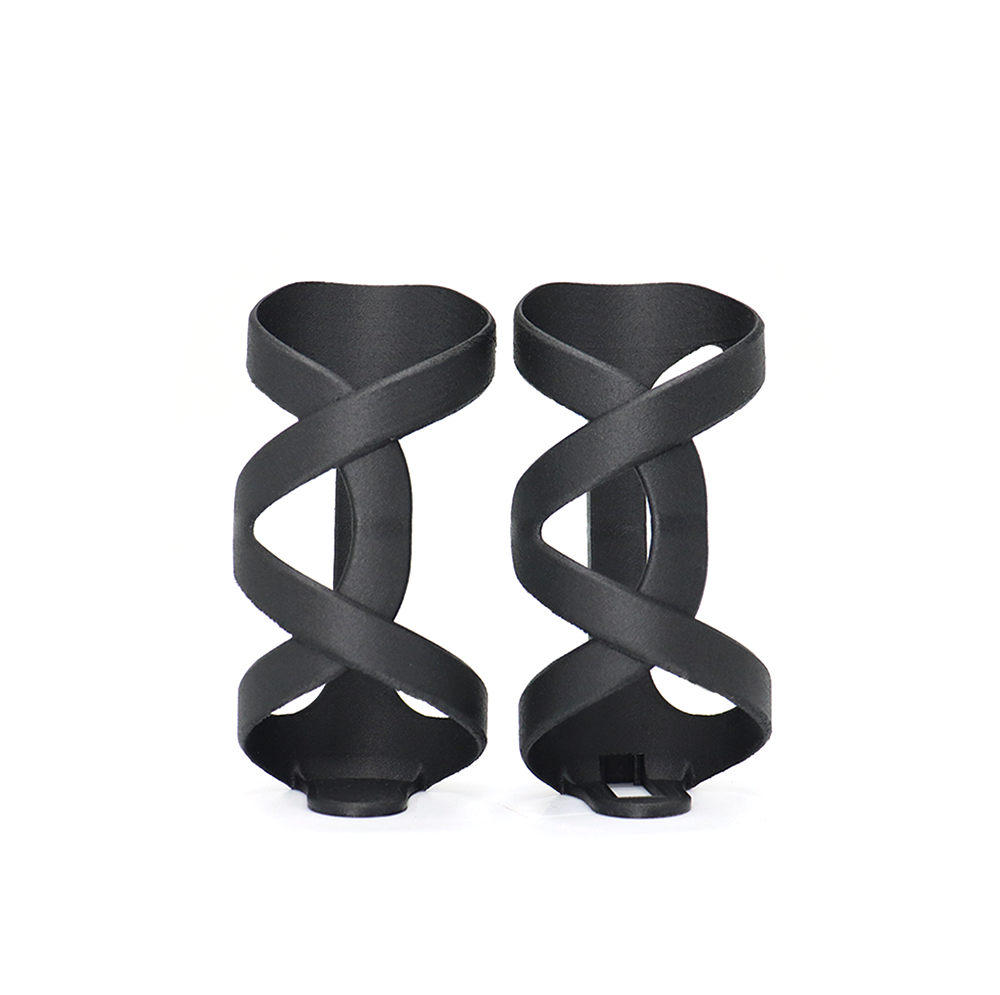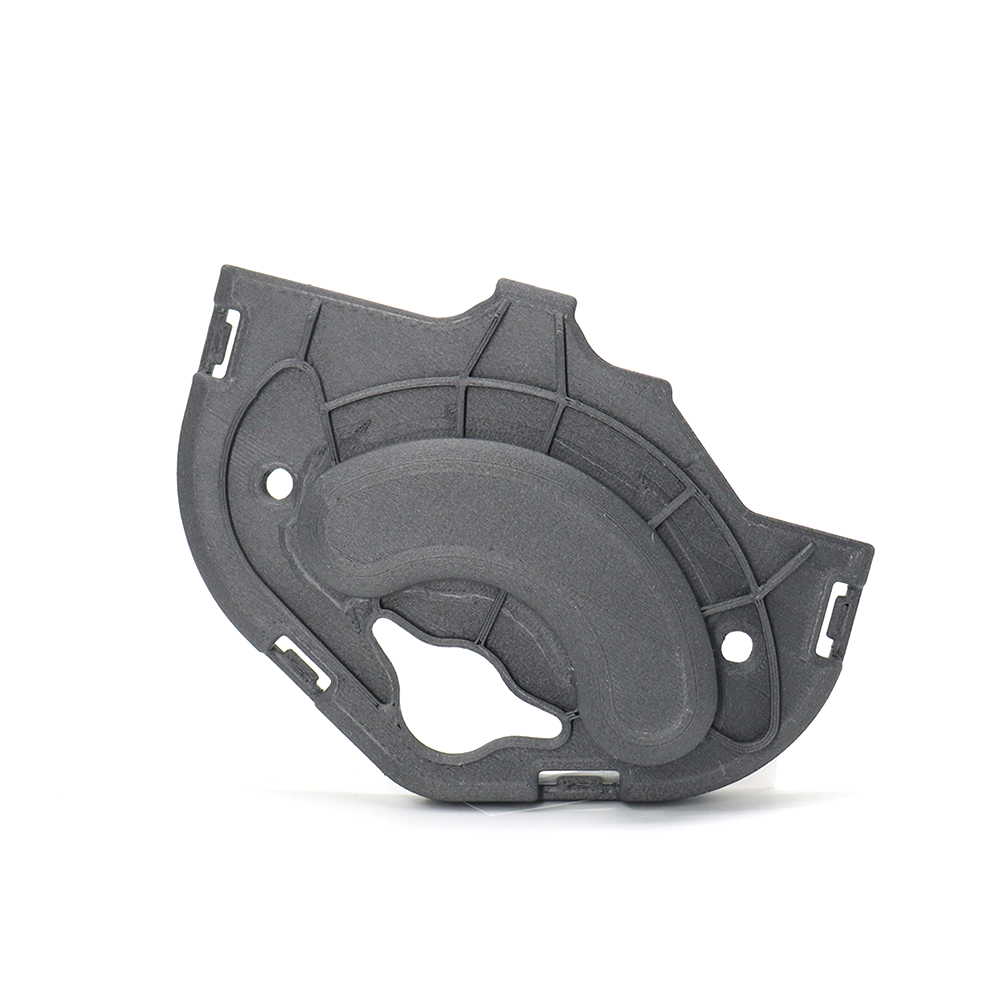What Are the Different Types of FDM 3D Printers?
Table of Contents
FDM is one of the most widely used 3D printing technologies, allowing users to create a wide range of physical objects from digital designs. This comprehensive guide will explore the various types of FDM printers, including their unique characteristics, capabilities, and applications. Whether you're a beginner or an experienced 3D printing enthusiast, understanding the differences between Cartesian, Delta, Polar, SCARA, and Belt FDM printers will help you select the right machine for your specific needs and projects.
A Quick Comparison Sheet
| Printer Type | Design Features | Pros | Cons |
|---|---|---|---|
| Cartesian (X-Y-Z) | Print head moves in X and Y axes, build platform moves in Z axis | Simple, versatile, good for beginners | Slower print speeds, less precision |
| CoreXY | Belt-driven system for X and Y movement | Fast, precise, good for high-detail prints | Complex maintenance, higher cost |
| H-Bot | Single-belt mechanism for X and Y movement | Improved performance, simpler than CoreXY | Mechanical backlash, less rigidity |
| Delta | Three vertical arms, circular build platform | High-speed, tall print volumes | Complex setup, precision issues |
| Polar | Rotating build platform, radial print head movement | Simpler mechanics, efficient space use | Software complexity, limited support |
| SCARA | Robotic arm with rotary joints | Speed, flexibility, efficient space use | High cost, complex setup |
| Belt | Conveyor belt build platform, angled print head | Continuous printing, ideal for long objects | Stability issues, limited build width/height |
What is FDM?
Fused Deposition Modeling (FDM) is a 3D printing method where a plastic filament is heated until it melts and then extruded layer by layer to build a three-dimensional object. This process is controlled by a computer that follows a digital design, allowing for precise and repeatable production of complex shapes. FDM is known for its simplicity, cost-effectiveness, and ability to use a variety of materials.

The Role of FDM in the Evolution of 3D Printing
Since its inception, FDM has significantly contributed to the advancement of 3D printing technology. It has democratized access to 3D printing, making it possible for individuals, small businesses, and educational institutions to experiment with and utilize 3D printing without the need for expensive equipment. FDM has paved the way for innovative applications across various fields, from prototyping and manufacturing to art and medicine.
How Do FDM Printers Work?
FDM printers operate by feeding a thermoplastic filament through a heated nozzle. The filament melts as it passes through the nozzle and is deposited onto a build platform. The printer moves the nozzle in precise patterns, laying down successive layers of material that fuse together to form the final object. The build platform typically moves vertically to accommodate each new layer, while the nozzle moves horizontally to create the shape of each layer. This process continues until the entire object is completed.
What Are Cartesian 3D Printers
The Cartesian coordinate system is a mathematical concept that uses three axes-X, Y, and Z-to define a point in three-dimensional space. In Cartesian 3D printers, this system is employed to control the movement of the print head and the build platform. Each axis corresponds to a specific direction: the X-axis moves left to right, the Y-axis moves front to back, and the Z-axis moves up and down.
X-Y-Z Cartesian Printers
X-Y-Z Cartesian printers are the most common type of 3D printers. They feature a straightforward design where the print head moves along the X and Y axes, while the build platform moves along the Z-axis. This design is simple and easy to understand, making it ideal for beginners.
These printers are versatile and suitable for a wide range of applications, from creating prototypes to producing functional parts. However, they can be limited by slower print speeds and less precision compared to more advanced designs.
CoreXY Printers
CoreXY printers use a unique belt-driven system that allows for faster and more precise movement of the print head. Unlike X-Y-Z Cartesian printers, CoreXY printers move the print head in both the X and Y directions simultaneously, using a pair of belts arranged in a specific pattern.
The design of CoreXY printers offers increased speed and precision, making them ideal for high-detail prints and more complex geometries. They are often preferred by users who need faster production times without sacrificing quality.

H-Bot Printers
H-Bot printers use a single-belt mechanism to control the movement of the print head. This design is somewhat similar to CoreXY but uses fewer components, which can simplify maintenance and reduce costs.
While H-Bot printers can offer improved performance over traditional X-Y-Z Cartesian printers, they may suffer from issues like mechanical backlash and less rigidity.
What are Delta 3D Printers?
Delta 3D printers use a unique kinematic system that sets them apart from Cartesian printers. Instead of moving a print head along traditional X, Y, and Z axes, Delta printers use three vertical arms connected to the print head. These arms move up and down to control the position of the print head, allowing for fast and efficient printing.
Vertical Arms and Circular Beds
Delta printers are designed with three vertical arms and a circular build platform. The print head is suspended by these arms, which move in harmony to position the print head accurately over the build area. The circular bed provides a different approach to printing, often resulting in faster print speeds.
Pros and Cons of Delta Printers
Pros:
- Speed: Delta printers are known for their high-speed printing capabilities. The design allows for quick movements, making them ideal for large prints that need to be completed quickly.
- Print Volume: The vertical arm design of Delta printers allows for taller print volumes, making them suitable for projects that require larger objects.
Cons:
- Complexity: The unique kinematics of Delta printers can make them more complex to set up and calibrate compared to Cartesian printers.
- Precision: While they are fast, Delta printers may sometimes lack the precision needed for very detailed prints. The design can introduce slight inaccuracies, especially in smaller objects.
Delta printers are a great choice for users who need high-speed and large-volume printing. But they do require a bit more technical know-how to operate effectively.
What are Polar 3D Printers?
Polar 3D printers use a polar coordinate system instead of the traditional Cartesian coordinates. This system involves rotating the build platform and moving the print head radially, which can simplify certain types of movements and potentially reduce the complexity of the mechanical design.
Polar Coordinate System
In a polar coordinate system, positions are defined by an angle and a distance from a central point. For Polar 3D printers, this means the build platform rotates (providing the angular position) and the print head moves in and out from the center (providing the radial position). This type of movement can be more efficient for certain shapes and can reduce the need for complex linear movements.
Design Features
Polar 3D printers typically have a circular build platform that rotates to create the angular movement. The print head is mounted on an arm that extends and retracts to change the radial position. This design can result in fewer moving parts compared to Cartesian printers, potentially reducing maintenance needs.
Pros and Cons of Polar Printers
Pros:
- Simplicity of Mechanics: With fewer moving parts, Polar printers can be easier to maintain and potentially more reliable.
- Efficient Use of Space: The circular build platform can make better use of the available space, sometimes allowing for larger prints within a smaller overall printer footprint.
Cons:
- Software Complexity: The unique movement system requires specialized software to convert standard 3D models into polar coordinates, which can be more complex to use and troubleshoot.
- Limited Adoption: Polar printers are less common than Cartesian or Delta printers, which means there might be fewer resources and community support available.
Polar 3D printers offer an interesting approach to 3D printing with their unique coordinate system and mechanical simplicity. They can be a good choice for specific applications but may require more specialized knowledge to operate effectively.
What are SCARA 3D Printers?
SCARA stands for Selective Compliance Assembly Robot Arm. SCARA 3D printers use a robotic arm to move the print head, which provides a unique combination of speed and flexibility. These printers are more commonly found in industrial settings due to their specialized design and capabilities.
Robotic Arm Movement
SCARA printers use a robotic arm with two rotary joints that allow the print head to move in a wide range of motions. This arm can move quickly and accurately, making it ideal for complex and detailed prints. The arm's design also allows for more efficient use of space, as it can reach different areas of the build platform without needing to move the platform itself.
Design Features
The SCARA design includes a fixed base with an arm that can extend and rotate. This setup allows the print head to move in an arc, which can be more efficient and faster than the linear movements of Cartesian printers. The flexibility of the arm also makes it easier to print in hard-to-reach areas and create more intricate designs.
Pros and Cons of SCARA Printers
Pros:
- Speed and Flexibility: SCARA printers can move the print head quickly and with high precision, making them suitable for detailed and complex prints.
- Efficient Space Utilization: The robotic arm can reach different parts of the build platform without moving the platform itself, which can save space and reduce the complexity of the machine.
Cons:
- Complexity and Cost: The advanced technology and precision components of SCARA printers can make them more expensive and complicated to set up and maintain.
- Limited Consumer Use: Due to their complexity and cost, SCARA printers are mostly used in industrial applications rather than by hobbyists or small businesses.
SCARA 3D printers offer a powerful combination of speed and flexibility, making them ideal for industrial applications that require detailed and complex prints.
What Are Belt 3D Printers
Belt 3D printers use a conveyor belt as the build platform. The print head is angled, typically at 45 degrees, allowing the printer to build layers diagonally. As the belt moves, finished sections of the print are carried away, making room for new sections. This setup enables the printing of objects of almost any length.
Ideal Uses for Belt 3D Printers
- Mass Production of Small Parts
These printers are great for producing many small parts continuously, like brackets and connectors, without needing to stop.
- Printing Long Objects
Belt printers can easily handle long items that are difficult to print on standard 3D printers, such as beams, pipes, and large costume pieces.
- Automated Workflows
Their continuous printing capability makes belt printers ideal for automated production lines, reducing the need for manual intervention and boosting efficiency.
Considerations for Build Size and Stability
- Build Size Limitations
While belt printers can print objects of unlimited length, the width and height are limited by the printer's build area. Parts should be designed to fit within these dimensions.
- Object Stability
Maintaining stability during printing is crucial. The moving belt can cause issues, especially for tall or intricate designs. Ensuring good adhesion to the belt and considering the center of gravity can help keep prints stable.
- Material Choices
Choosing materials that stick well to the belt and stay stable during printing is important. Experimenting with different materials and settings can help achieve the best results.
Belt 3D printers offer unique advantages for continuous and large-scale printing projects. Understanding their strengths and limitations can help users maximize these innovative machines.
Comparative Analysis of FDM Printer Types
1. Speed and Accuracy
Speed varies among FDM printers. Standard FDM printers are generally slower, while CoreXY and Delta printers are faster due to their efficient mechanical designs. When it comes to accuracy, Cartesian printers offer good precision suitable for most applications. CoreXY printers enhance this precision with their stable motion system, and Delta printers excel in printing tall objects with fine details, though they can be harder to calibrate.
2. Build Volume
Build volume capabilities differ across printer types. Cartesian printers typically have a cubic build volume, making them versatile but limited by the machine's physical size. CoreXY printers often provide larger horizontal build volumes within a compact footprint. Delta printers feature a cylindrical build volume, ideal for tall objects but restricted in base area.

3. Material Compatibility
Most standard FDM printers can handle common materials like PLA, ABS, and PETG, but their ability to print advanced materials like TPU or nylon depends on the extruder and heated bed quality. Advanced FDM printers, including some CoreXY and Delta models, can print a wider range of materials, including high-temperature filaments and composites.
4. Maintenance, Cost, and User-Friendliness
Maintenance needs vary. Cartesian printers are relatively easy to maintain with straightforward parts replacement. CoreXY printers, though efficient, have more complex belt systems making maintenance trickier. Delta printers require precise calibration, posing a challenge for beginners.
In terms of cost, standard FDM printers are generally more affordable, making them accessible for hobbyists and beginners. CoreXY and Delta printers, especially those with advanced features, tend to be pricier but offer better performance and capabilities.
As for user-friendliness, basic Cartesian printers are the easiest to use, supported by a large community and abundant resources. CoreXY printers have a steeper learning curve but deliver better performance. Delta printers are the most challenging to master due to their unique movement and calibration requirements.
Choosing the Right FDM Printer for Your Needs
Understanding the distinct types of FDM printers-Cartesian, Delta, Polar, SCARA, and Belt-helps in making an informed choice. Each type has its unique strengths, from the user-friendly Cartesian printers to the high-speed CoreXY and Delta models, and the specialized Polar and SCARA designs. By evaluating these factors against your specific projects and experience level, you can choose the FDM printer that best fits your needs, ensuring successful and efficient 3D printing. Happy printing!





